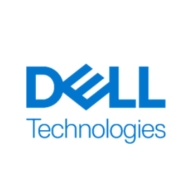

PowerEdge C and Dell PowerEdge M compete in the server solutions category. PowerEdge C seems to have the upper hand with its strong performance in virtualization and CPU power, while Dell PowerEdge M offers cost-effective solutions with centralized management features.
Features: PowerEdge C offers superior virtualization capabilities, high CPU power, and advanced iDRAC management features. It excels in handling hybrid environments. Dell PowerEdge M is noted for its ease of management, high availability, and scalability, with centralized monitoring through OpenManage and iDRAC.
Room for Improvement: PowerEdge C is viewed as expensive and needs better technical support and AI integration. Dell PowerEdge M requires improved processing features, AI support, and VLAN management efficiency, alongside a hyper-converged option and expanded networking capabilities.
Ease of Deployment and Customer Service: PowerEdge C supports both on-premises and hybrid environments with mostly robust customer support, although some delays are reported. Dell PowerEdge M is mainly used on-premises and praised for good customer service, slightly hindered by slow response times due to offshoring. Both products generally receive high ratings for technical support.
Pricing and ROI: PowerEdge C, though expensive, provides strong performance benefits with pricing dependent on configuration. Dell PowerEdge M is more affordable with an average pricing structure, offering reliable ROI and flexibility in package customization. Price hikes due to advancements are observed, but it remains cost-effective for medium enterprises.
We utilize AI technology with Dell PowerEdge M through a module known as CloudIQ, which provides automation and takes care of predictive analysis and reporting.
They provide excellent help when needed.
Regarding technical support from Dell, I find them to be one of the best support providers in the industry right now.
Regarding scalability, I can scale up to 64 enclosures, and each enclosure can hold around 7 blades.
There are differences in security configurations, particularly in SNMP and SNMP3, between HP ILO and iDRAC.
In terms of potential room for improvement regarding Dell PowerEdge M, I would want to see something such as dense nodes and additional storage, as well as multiple network connectivity on the blades.
This is one area where they can improve the performance of the server or implement some application improvements in the solution to make it easier for end users to implement properly.
Sometimes Dell may be a little costlier, but that is considering the services and solutions we are providing, which can be adjustable.
The ease of troubleshooting and managing through remote access, using tools like iDRAC, significantly saves me time.
If the customer is changing their network infrastructure from 1GB or 10GB to 25GB or 400GB, the MX7000 fabric switch can support that.


The Dell PowerEdge M-Series blade servers address the challenges of an evolving IT environment by delivering leading enterprise classfeatures and functionality. The M-Series delivers a unique array of options configured to meet the needs of your IT environment both now and in the future.
PowerEdge C help you to maximize hyperscale performance with up to 4 independent server nodes, flexible storage and shared infrastructure in a compact 2U chassis.
We monitor all Blade Servers reviews to prevent fraudulent reviews and keep review quality high. We do not post reviews by company employees or direct competitors. We validate each review for authenticity via cross-reference with LinkedIn, and personal follow-up with the reviewer when necessary.